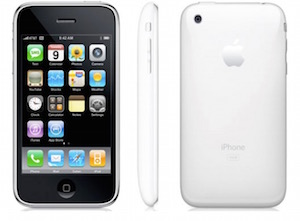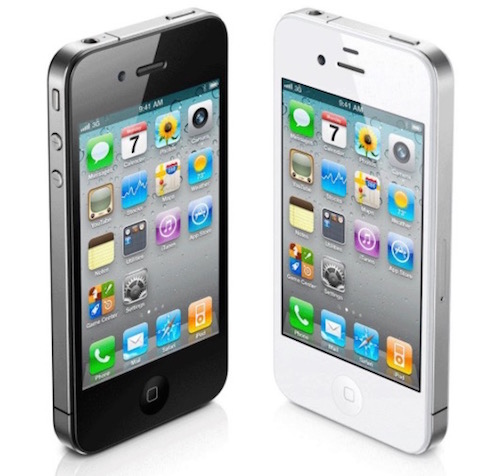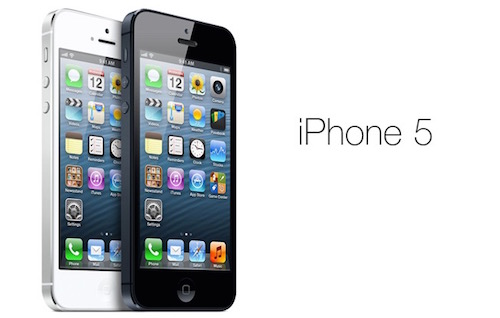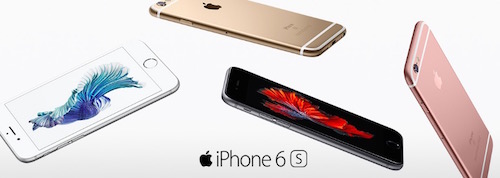The History of iPhone

Toggle Dark Mode
The iPhone has completely revolutionized the modern phone industry, and has undergone a number of serious and feature-packed changes since it was first announced in 2007.
We often take for granted our technology, however, and forget how far technology has come since 2007. To try and highlight the advancements in technology over the past eight years, we’ve put together a brief history of the iPhone.
2007: The Original iPhone
The original iPhone was launched on January 9, 2007, with the great Steve Jobs taking to the stage for what is without a doubt one of his most important announcements ever. During the launch, he said that he was going to launch a wide-screen iPod with touch controls, a revolutionary phone, and a breakthrough internet device. The real kicker was that they were all the same device.
The original device was only available through AT&T, and could only connect to data through the Edge network. It had 4GB or 8GB storage options. In September of 2007, however, the 4GB option was dropped, with a 16GB option being offered in February 2008. The rear-facing camera (its only camera) maxed out at only 2 megapixels.
The original iPhone also introduced the concept of a touch screen only phone, and spurred the idea of touch-screens without styluses for a number of other companies.
2008: The iPhone 3G
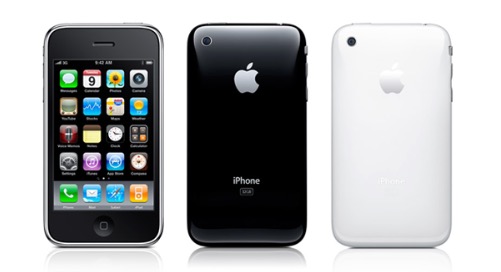
The second generation of the iPhone was announced in September of 2008, adding 3G connectivity, which was a big relief for many people who were previously browsing on Edge.
The iPhone 3G also heralded the launch of the now famous Apple App Store, which has blossomed into a massive store for users to download games and other apps, as well as a huge opportunity for developers.
2009: The iPhone 3GS
The iPhone 3GS was the first release of an “S” iPhone, which has since become commonplace for every second iPhone release. There were a number of important hardware updates in this phone, such as the upgrade from a 2MP camera to a 3.15MP camera that was capable of taking 480p video.
Apple also introduced the 32GB storage option, which is great for those that needed to store a lot of apps or songs. Keep in mind, this is really before the popularity of cloud storage began, and the iPhone has never offered expandable storage, so a higher storage option was a big deal.
2010: The iPhone 4
The iPhone 4 was a big release for a number of reasons. The first was the fact that it offered a totally new design, which was much more “industrial” looking than its predecessor.
The iPhone 4 was also the first iPhone to offer a “Retina” display, which was 640 x 960 pixels and offered a pixel density of 330 pixels-per-inch. Not only that, but users were also pleased to find an upgraded camera, which came in at 5MP and was able to capture video at 720p. The front-facing camera was finally added to the phone, and while it was only VGA in terms of resolution, it was great for those wanting to video chat with their friends. This is also possibly the first time that users could take selfies.
iOS was also able to do more with the introduction of the A4 processor, which helped tremendously with things like multitasking.
2011: The iPhone 4s
With the release of the iPhone 4s, Apple once again updated the camera, offering 8MP instead of the 5 offered on the previous generation device. This camera was also able to capture 1080p video.
A dual-core A5 processor was also introduced, and while the history of iOS is a topic that could be in a completely different article, Siri was first introduced in the iPhone 4s.
2012: The iPhone 5
The iPhone 5 was significant mainly because of its design change, with the display size being brought up to four inches, and a new aluminum frame being implemented, which made the device both thinner and lighter. Apple also finally got rid of the 30-pin connector that was used for charging and data transfer, and replaced it with the “Lightning” connector, which was faster and smaller.
4G LTE connectivity was also first introduced in the iPhone 5, which meant users could stream higher-resolution videos, download apps faster, and so on.
2013: The iPhone 5s
Perhaps the biggest change to the iPhone in 2013 was the launch of two iPhone models, with the iPhone 5s being the standard iPhone and the iPhone 5C being for the more budget-minded.
The iPhone 5s was upgraded in a few ways, with the most significant upgrade being in the TouchID sensor implemented into the home button. Apple also gave the rear-facing camera a dual-LED flash.
The addition of the A7 processor was also pretty significant because of the fact that it meant that the iPhone 5s was the first smartphone with a 64-bit processor.
2014: The iPhone 6 and 6 Plus
Apple ditched the budget iPhone in 2014, however it did not ditch the idea of two iPhones, instead offering the phablet-sized iPhone 6 Plus.
The design of the iPhone was also quite substantially altered for the iPhone 6, making it much more simple and a lot thinner.
The iPhone 6 Plus offered similar specs as the iPhone 6, however the display was a larger 5.5-inches, compared to the iPhone 6’s 4.7-inches.
Both devices also first featured Apple Pay, with Apple adding NFC capabilities in the iPhone 6 and 6 Plus. The NFC chip, however was limited to Apple Pay, and developers were not able to take advantage of it.
2015: The iPhone 6s and 6s Plus
The latest and greatest iPhone finally did away with the 8MP camera, replacing it with a 12MP sensor. This meant that the iPhone 6s was able to capture 4K video.
Another interesting change to the lineup was the addition of Rose Gold as a color option, which was introduced for users who want to match their Rose Gold Apple Watch with a Rose Gold iPhone.
The biggest change, however, was by far the implementation of Apple’s 3D Touch technology. This essentially detects how hard a user presses on the display, changing input commands based on that. In fact, it is largely thought that the addition of this technology will herald a new wave of smartphones with similar technologies.
Beyond
The next iPhone will most certainly be called the iPhone 7, however beyond that it’s anyone’s guess as to what it new advancements it could feature. There’s no telling what the future brings for the iPhone, however it’s sure to be on the cutting edge of technology.



